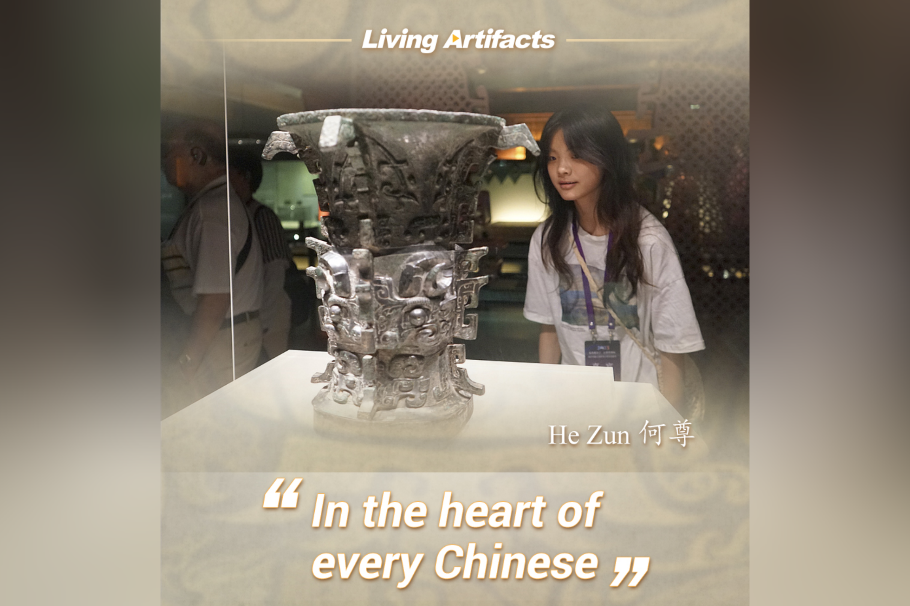Common prosperity takes center stage


Editor's note: The report submitted to the 20th National Congress of the Communist Party of China stresses the importance of China's modernization to realize the rejuvenation of the Chinese nation. The CPC has led the people in creating a new model for development, providing a successful example for developing countries to explore in their quest for modernization. Three foreign experts share their views on the issue with China Daily.
Common prosperity takes center stage
By Harvey Dzodin
As a keen observer of China, my attention is always riveted to the National Congress of the Communist Party of China held every five years, for it is at the apex of the country's whole-process people's democracy governance model. This is especially true for the report of the general secretary of the CPC Central Committee which is the compass pointing the direction in which the country and its over 1.4 billion people are headed.
The report at the 20th CPC National Congress on Oct 16 revealed, despite the many challenges of the past five years, that the ship of the state helmed by competent CPC leadership, is on course to serve the people as always.
While the CPC Central Committee announces the general direction, the details will be developed and fleshed out by teams of cadres at the five levels of the Chinese government — from the central to the village level.
The one element that the Party leadership focused on and that best exemplifies the vast progress China has made is the centrality of common prosperity.
The Chinese leadership has reiterated the importance of increasing the incomes of low-income groups, promoting fairness, and better balancing development across different regions, with an emphasis on people-centered growth. Also, the Chinese leaders pledged to reasonably regulate excessively high incomes, and to encourage high-income people and enterprises to return more to society.
Sharp observers, however, might have foreseen this pledge coming five years ago — at the 19th National Congress of the CPC — when China's principal contradiction was announced to evolve from one between the ever-growing material and cultural needs of the people and backward social production to that between "unbalanced and inadequate development and the people's ever-growing needs for a better life".
Marxism examines the world through the lens of dialectical materialism, because societal contradictions or dynamic opposing forces are always present in society and power social change. In Marxism, society is defined by its principal contradiction. By addressing this contradiction, society can enjoy peaceful development. But if left to fester, the contradiction could result in chaos and anarchy.
Understanding this one concept unlocks the key to understanding China's enormous progress and the success of the CPC.
The previous principal contradiction enunciated by Deng Xiaoping in the 1980s — a couple of years after the launch of reform and opening-up and at a time when China was a low-income country — was "the ever growing material and cultural needs of the people versus backward social production". Hence, reforming the Chinese economy, with an emphasis on growth, was the CPC's "central task".
Aggressively addressing this principal contradiction resulted in China becoming the world's second-largest economy, and the "world's factory". But it was at the expense of financial and social equality.
The measures needed to resolve China's present principal contradiction and the doctrine of common prosperity are inextricably intertwined. In a phrase, in the new development paradigm, the warmth of human-focused quality will replace cold, statistical quantity.
It is not merely about the quality of life. It covers all aspects of Chinese society. The Chinese people, like people in other countries, crave a better life. But it isn't only about having more money. It's about the things the Chinese people dreamed about for millennia but couldn't get before the new era: better healthcare to enjoy a longer, healthier life; better education; better jobs; better housing; better environment; and better personal safety and security.
It's also about building a more advanced economy that applies leadership in areas such as artificial intelligence, research and development and robotics to improve basic production. It's about ramping up high-quality development using high-tech, be it building more high-speed trains or being the first to land on the dark side of the moon.
In truth, China has been working for decades to realize common prosperity, but accelerated and prioritized it after the 18th Party Congress. China also made the eradication of extreme poverty by the end of 2020 its primary goal. In realizing the age-old "Chinese Dream" of building a moderately prosperous society in all respects by lifting 100 million people out of extreme poverty in the past decade, China accomplished what no other country in world history has, that is, lifting about 800 million people out of poverty in just more than 40 years. That's three-quarters of the world total.
In achieving common prosperity, China presents an alternative development model to the world. China's model is in sharp contrast to the models followed by the United States — and other countries — which is facing many problems but has few solutions. The US is a country where billionaires pay little or no tax and where half the Congress members are millionaires but are not punished even for engaging in insider trading.
But the "do as I say, not as I do" model no longer works in the 21st century, especially compared with China's development model that has been successful. No wonder common prosperity is a buzzword in China now. And there is no doubt that it will continue to power China to realize national rejuvenation and enhanced global leadership.
The author is a senior fellow at the Center for China and Globalization (CCG). The views don't necessarily reflect those of China Daily.


































